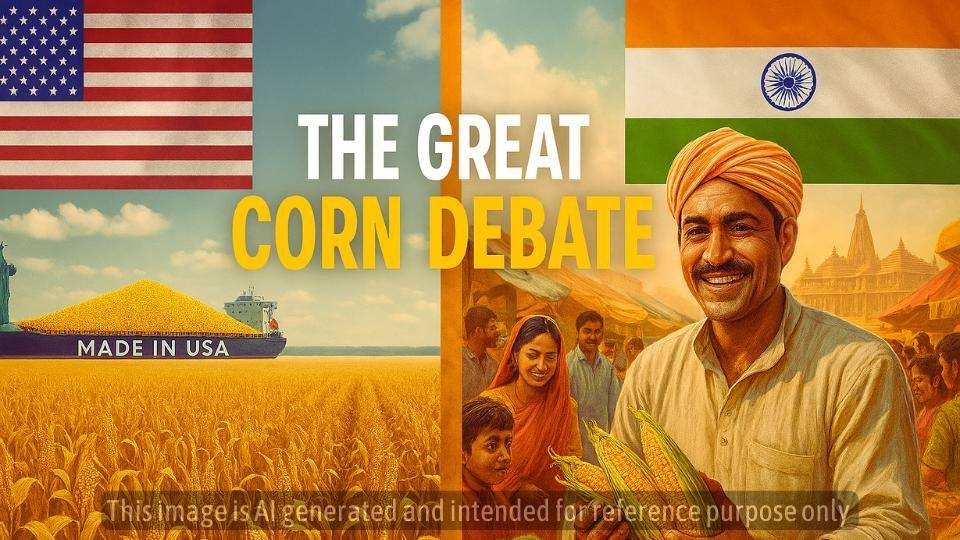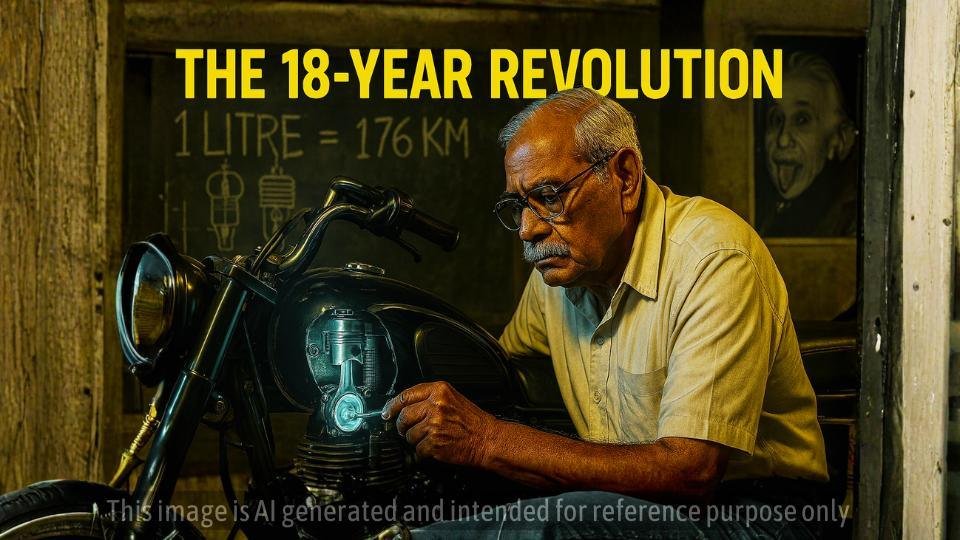कृपया इसे हिंदी में पढ़ने के लिए यहाँ क्लिक करें
A Tale of Tariffs, Genetically Modified Crops, and Global Trade Power Plays
In the complex world of international relations, it’s not always multi-billion dollar defense deals or high-tech collaborations that cause the most friction. Sometimes, it’s something as seemingly simple as corn. For months, a simmering trade dispute between India and the United States has been threatening to boil over, and at the heart of it lies a single, persistent American demand: “Why won’t 1.4 billion people buy our corn?” This question, recently amplified by US officials, including Commerce Secretary Howard Lutnick, goes to the very core of the agricultural and geopolitical tensions between the two global giants.
The American Push: A Market of 1.4 Billion
The United States, the world’s undisputed king of corn production and export, is on a mission to find new markets for its golden harvest. With a projected export of 75 million tonnes for 2025-26, the U.S. has a massive surplus to sell. This urgency is compounded by a dramatic collapse in demand from China, which was once its top buyer. In 2022, China imported $5.21 billion worth of U.S. corn. By 2024, that number had plummeted to a mere $331 million, leaving American farmers in a precarious position.
Faced with this economic pressure, Washington has turned its sights on India, a nation with a massive and growing population. U.S. officials have openly expressed their frustration, framing the trade relationship as a “one-way street” where India sells its goods to the U.S. while keeping its own markets, particularly agriculture, firmly shut. The argument is simple: with such a large population, why isn’t India buying even a small amount of American corn?
India’s Resistance: A Multi-Layered Defense
India’s refusal to open its doors to U.S. corn is not a simple act of protectionism. It is a carefully considered policy built on three main pillars:
- Protecting a Nation of Farmers: India is largely self-sufficient in corn, producing nearly as much as it consumes—around 42 million tonnes annually. The sector is dominated by small-scale farmers who are extremely vulnerable to price shocks. With U.S. corn being significantly cheaper (under ₹15/kg compared to India’s wholesale price of ₹22-23/kg), a flood of cheap imports could devastate the livelihoods of millions of Indian farmers.
- The Great GMO Wall: This is perhaps the most significant barrier. Over 90% of the corn grown in the U.S. is genetically modified (GM), engineered to resist pests and herbicides. India, on the other hand, has a strict ban on GM food crops, with the only exception being non-food GM cotton. This ban is rooted in deep-seated concerns about biosafety, food security, and the potential long-term impact of GM products on human health and the environment.
- High Tariffs: Even for non-GM corn, India has a steep tariff structure in place. It allows for a limited quantity of imports (up to 0.5 million tonnes) at a 15% duty, but anything beyond that attracts a hefty 50% tariff. This policy is designed to discourage large-scale imports and protect the domestic market.
The Path Forward: A Compromise on the Horizon?
Despite the deadlock, both nations are back at the negotiating table. Recent high-level talks, including a visit by Indian Commerce Minister Piyush Goyal to Washington, have been described as “positive and forward-looking.” One potential compromise that has emerged is a proposal for India to import U.S. corn exclusively for ethanol production. Since this corn would not enter the food chain, it could be a way to address India’s biofuel needs while sidestepping the sensitive issue of GM food.
However, the path to a resolution is fraught with challenges. India faces the delicate balancing act of managing its trade relationship with a powerful ally while also protecting the interests of its vast farming population. The U.S., on the other hand, is under pressure to deliver for its farmers, a key political constituency, especially in an election year.
Social Message
The India-U.S. corn dispute is more than a trade spat; it is a reflection of the different priorities that shape nations. While one side champions free markets and global trade, the other prioritizes self-sufficiency and the protection of its most vulnerable citizens. It reminds us that in our interconnected world, every policy decision, no matter how small it may seem, has far-reaching consequences. True partnership and progress lie not in forcing one’s will upon another, but in finding a middle ground that respects the unique needs and values of all.







Leave a Reply